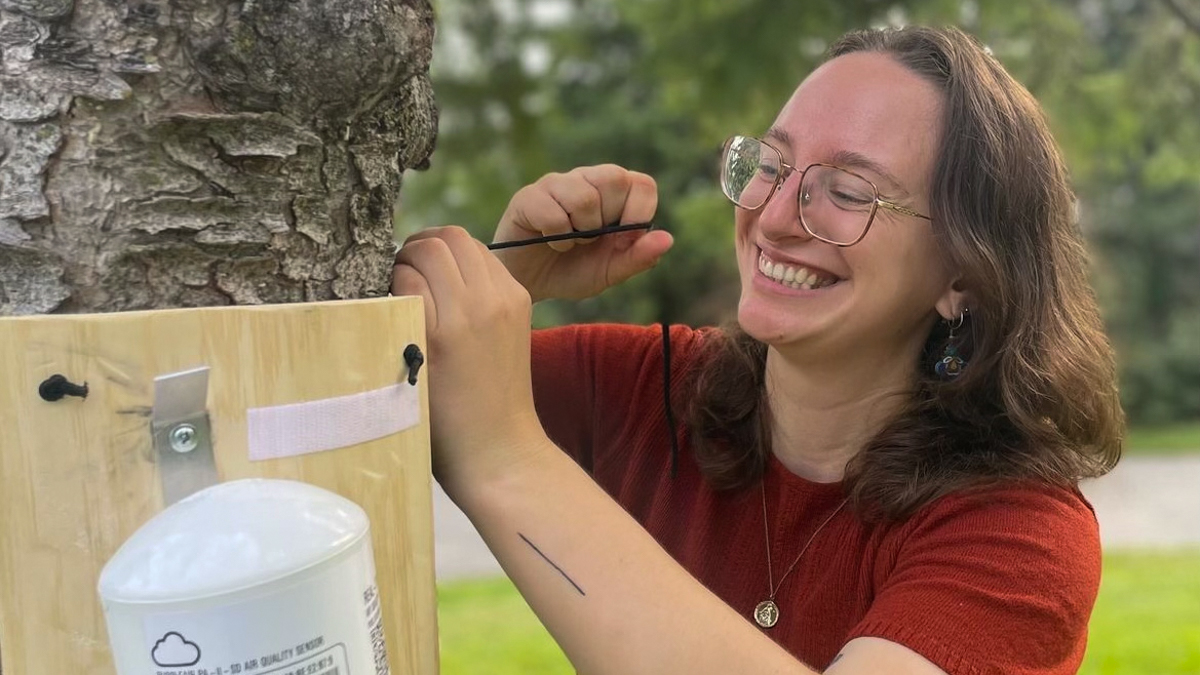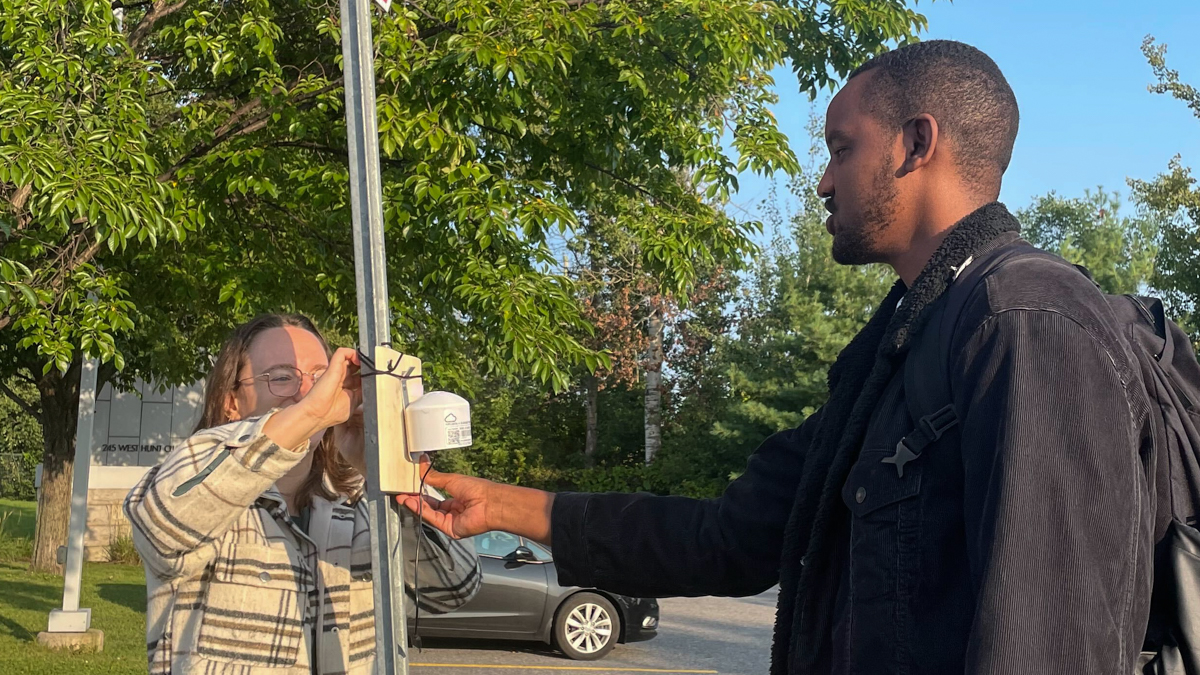Ecology Ottawa is asking the City of Ottawa to step up with funding to keep a community-based air-quality monitoring program going into the future.
Breathe Easy began in 2020 and has become one of Ottawa’s largest community-based science projects. In 2023, about 60 volunteers collected some 180 samples from 46 different monitoring locations across the city. Findings from the 2023 Breathe Easy campaign, which ran from the end of June to the beginning of October will be available in January.
At a recent meeting of the city’s Environment and Climate Change Committee, Dan Rutabingwa Gakire of Ecology Ottawa highlighted data from a 2021 report showing variations in air quality across the city. The report found that Ottawa’s lower-income neighbourhoods may be more likely to face air pollution.
Because of this disparity and the benefits of a community science approach, it’s now time for the city to fund the work into the future, said Gakire. He said the program does not necessarily need to be run by Ecology Ottawa, but he said he believes monitoring should continue.
Breathe Easy has relied on donors until now. It was only intended to last three years, Gakire told Capital Current. The Breathe Easy 2023 campaign was funded by the Trottier Foundation.
“The aim of the funders was to show the city that this is needed,” he said. In the past three years, the Breathe Easy program has run on private grant funding ranging from $10,000 to $20,000 per year.
There is only one provincially run air quality monitoring station in Ottawa, in MacDonald Gardens Park downtown. The City of Ottawa has stations of its own.
“It does not make sense to have one single air quality monitor in one area in the whole city,” said Gakire. “Air quality is not a monolith.”
There is awareness of the project on city council. During the 2023 Breathe Easy campaign, councillors Jessica Bradley, Sean Devine, Laine Johnson and Theresa Kavanagh attended a monitoring session in their wards to learn more about the program.
Coun. Shawn Menard, chair of the Environment and Climate Change Committee, said he supports city funding for a community science air quality monitoring project.
“I am definitely open to the idea of the city doing more to support that type of project, either financially or taking it on themselves,” Menard said.
Menard said he recognizes the value of a community approach on such projects.
“I really appreciate that type of work being done by residents, and it obviously helps the city … [We] just want to be able to support those efforts where we can,” he said.
Elisabeth Gilmore, who teaches civil and environmental engineering at Carleton University, said community science projects such as Breathe Easy can bring data and evidence to issues that communities are already intuitively aware of. She says the data matters because air quality varies based on location, and pollution more frequently impacts those who are marginalized.
“Communities know what they’re experiencing; it’s just by giving them the tools and ability to collect the data, it empowers them to bring their issues to places like the City of Ottawa, or the province or the federal government,” said Gilmore.
In the 2021 Breathe Easy report, South Vanier/Heron, Lowertown and the ByWard Market had the highest levels of air pollution.
Gilmore said research highlights the potential impacts of being exposed to fossil fuel-caused air pollution, such as heart disease, stroke, lung disease and neurodegenerative conditions. A study by the British Medical Journal estimated that there are 5.13 million excess deaths per year globally due to air pollution from fossil-fuel use.
Gilmore added how we view air quality monitoring has changed in recent years. Historically, monitors were generally located near big polluters, to ensure regulation compliance, but now there is a shift to preventive monitoring.
During this campaign, Ecology Ottawa chose air monitoring locations close to schools, child-care centres, hospitals and seniors’ residences.
“It’s a shift … to thinking about how we keep people’s health,” Gilmore said.

Gemma Patey, 24, who worked as a community organizer for the 2023 campaign, said health became top of mind for volunteers as wildfire smoke engulfed Ottawa this past spring and summer.
“[Some] were drawn to the program this summer because of the very evident poor air quality in our community at the beginning of June when you could see and smell all the wildfire smoke for one of the first times that Ottawa experienced,” said Patey.
Gilmore said because wildfire smoke is less predictable than other forms of air pollution, having decentralized air quality monitoring is a promising short-term way to mitigate this risk.
“You can start off a day with moderate levels of air pollution, and that can very quickly escalate into absolutely hazardous conditions, and it can be much more location-specific,” she said.
Patey, who coordinated the volunteer monitoring, said she is curious about whether the increasing amount of commuters on the road will have an impact on this year’s report.
Patey also said it felt rewarding to work with a diverse range of volunteers who all had different reasons for getting involved. “A really interesting aspect of this project was bringing science right into the physical hands of volunteers throughout the city,” she said.
Menard said he is looking forward to the new report and that this type of data can help inform the city on decisions around transportation and supporting the street tree canopy.
“Areas I’m looking for certainly within the report are, yes, where we’re struggling, but also what the solutions might be. The more we can hear from that report about what the city should be doing to mitigate the effects of poor air quality, I think, the better,” Menard said.




